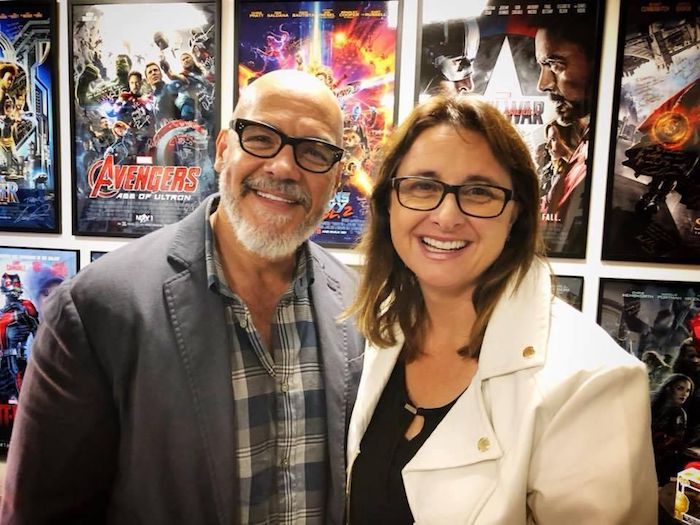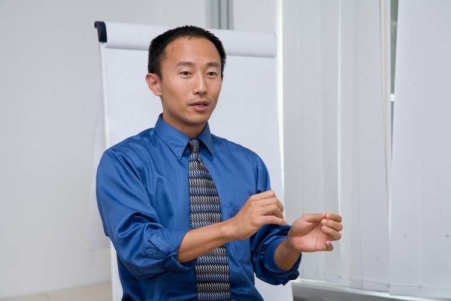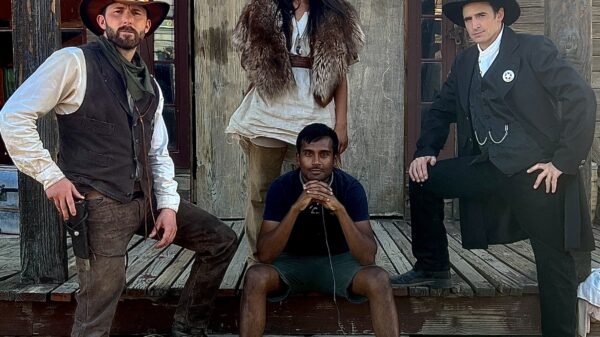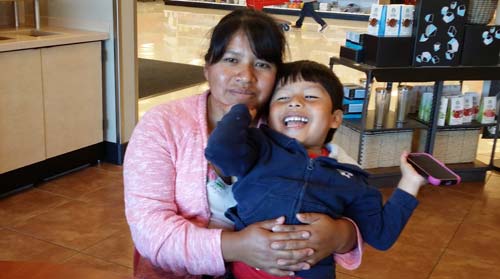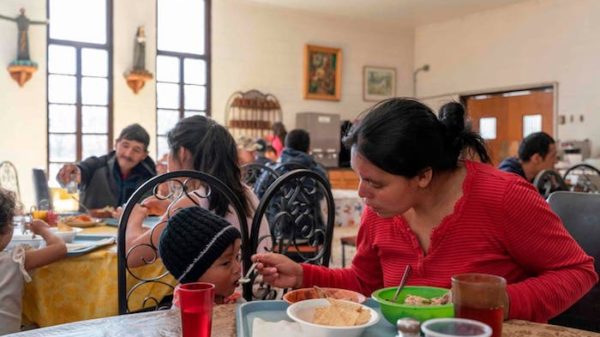His father was thrown into prison over a couple bottles of milk.
Magazine, The Immigrant Experience, Forbes
As a toddler in Cuba, Tony Hernandez was diagnosed with a severe calcium deficiency. Dairy could help, but was severely rationed by the Castro government. His father bought 2 liters on the black market, got caught and was incarcerated for six months.
After the family escaped to the U.S., Hernandez heard this story and others like it shared over the dinner table—conversations which inspired and motivated him.
Now 56 years old and living in Miami, Hernandez is the President and CEO of Latino Broadcasting, a leading multimedia company targeting the U.S. Hispanic community.
A decade ago, Hernandez founded the Immigrant Archive Project (IAP) with his business partner Gustavo Pombo. In the subsequent years, their teams have recorded the stories of over 2,000 U.S. immigrants from Latin America, Asia, Africa and Europe. The youngest interview subject was 8 years old. The oldest turned 108 the week after her interview.
This Q&A has been edited for clarity and brevity.
What was your immigrant experience?
I was 5 when we arrived. I grew up in an immigrant enclave just across the Hudson River from New York City. All of the kids on my block were either immigrants or the children of immigrants.
We moved to East Rutherford, New Jersey during my sophomore year of high school, my introduction to living in a real American neighborhood. We were one of maybe three Latino families, yet never felt marginalized.
My college years were spent at the University of Wisconsin-Superior. It was a culture shock, coming from northern New Jersey, but I never experienced racism. On the contrary, I was made to feel at home from day 1 and was even elected Homecoming King.
Is that positive reception as common today?
In 2007, I first took notice of an anti-immigrant backlash across a variety of conservative news outlets. Immigrants—particularly the brown and undocumented variety—became the targets of radio and TV commentators, as well as numerous political figures. Nativism was beginning to rear its ugly head, but it wasn’t until years later that it became truly personal.
The week that Donald Trump was elected president, our middle daughter, who was a freshman at the University of Wisconsin-Madison, was speaking with my mother on the phone in Spanish. A fellow student walked by and yelled, “You are in America—quit speaking Mexican!”
That same year, our eldest daughter, also a student at Wisconsin, asked to be moved to a different room after her roommate called her a “spic.”
I was shocked. I’d spent four years at a University of Wisconsin campus decades earlier and never experienced anything like this.
What prompted you to start the Immigrant Archive Project?
The idea for an oral history project on the immigrant experience came to me while watching Survivors of the Shoah. After wrapping up Schindler’s List, Spielberg went on to record Holocaust survivors telling their stories.
Watching, I pictured my parents talking about their immigrant journeys. While you can’t compare immigrants to Holocaust survivors, I liked the idea of recording our stories.
By early 2008, after a year of watching the discourse around immigration take a xenophobic turn, it was time to launch this project. Perhaps naively, I thought if I could preserve the dinner table conversations that I had grown up around, it could help to set the record straight.
I began by interviewing friends and family members on a simple, hand-held digital recorder. The stories were much more powerful than I had ever imagined and we began to shoot these interviews on two hi-definition video cameras.
What kind of stories did you hear?
Several years before we emigrated, my maternal grandparents fled Cuba with 32 people aboard a 22-foot boat. I was probably 2 years-old at the time and my parents didn’t want to risk the trip with me being so small. I’d hear bits and pieces of the story growing up, but I always heard it via other people.
Then I got an email from a woman in Connecticut who wanted to interview her parents and submit the story to the IAP. I mailed her my digital recorder. She sent it back. A third of the way in, her parents mentioned my grandfather’s name. Her parents and my grandparents were on the same boat.
What happened on that trip?
They pushed off from shore in the middle of the night and the journey took several days. The engine failed midway and their small boat was caught in a storm and was battered about all evening.
The boat was adrift when a US Coast Guard ship spotted them and picked up the refugees. This was before the U.S. government’s “Wet Foot, Dry Foot” policy. I’m guessing the year was 1963 or ’64.
Listening to this story, which had evaded me all these years, was quite a surreal experience.
What other things have happened due to starting the IAP?
Four years after launching the project, I received an email message from Maurice Bloem at Church World Service (CWS), a faith-based organization that transforms communities through sustainable responses to hunger, poverty, displacement and disasters.
Maurice explained that they were considering me for the inaugural John Backer Humanitarian Award. John Backer spent years waiting by the piers in New York to help new arrivals from World War II-ravaged Europe get to Penn Station to start the train trip to their new resettlement destinations across America.
Something about the CWS logo caught my attention. My mom saved everything from our immigrant journey—even the boarding passes from Cuba—so I asked her if she remembered which group helped us settle in the States.
She immediately went into her records and sent me copies of the paperwork. It was CWS that paid for our flight from Miami to New Jersey so we could join my grandparents. CWS also provided my family with a check for $100 to help us get on our feet.
She reminded me that in 1968, on the one-year anniversary of our arrival, my father dictated a letter to me and asked that I write it in English. It was a letter to the leadership of CWS.
In it, my father explained that we were doing well and that he worked as a dishwasher by day and cleaned a factory by night.
By now our family had an apartment and my sister, Lizzette, was the first American-born member of the family. He expressed his sincere gratitude to the United States and to CWS.
And he enclosed a check for $100 and asked them to provide these funds to an immigrant family who was now in the same position we were in just a year earlier.
The CWS wrote back asking to feature my dad in their magazine. My dad said, “I didn’t write this letter to be featured in a magazine,” and they never heard from us again. Mom still has a copy of the letter from CWS.
Later that year, I shared the inaugural award with immigrant rights activist Myrna Orozco and brought my parents to the ceremony.
What the biggest surprise about your work with the IAP?
There are so many, but you know what’s really surprising? That this is more relevant now than it was 10 years ago. I thought there’d be no need to continue because the xenophobia would’ve fizzled out. Now we’re seeing it grow stronger.
You’re very public about saying that the business community should support immigrants. Why?
Marketers often forget that the Latino boom is a relatively recent phenomenon. The foreign-born Latino population has increased to nearly 20 times its size over the past half century, going from less than 1 million in 1960 to 19.4 million in 2015.
On the other hand, while the U.S.-born Latino population has only increased sixfold over this time period, there are about 32 million more U.S.-born Latinos in the U.S. today (37.1 million) than there were in 1960 (5.5 million).
For most Latinos in the U.S., the immigrant experience is at best one or two generations removed from the youngest members of the family.
We often think of language as the common denominator among Latinos, when it’s the immigrant experience that truly unites us.

